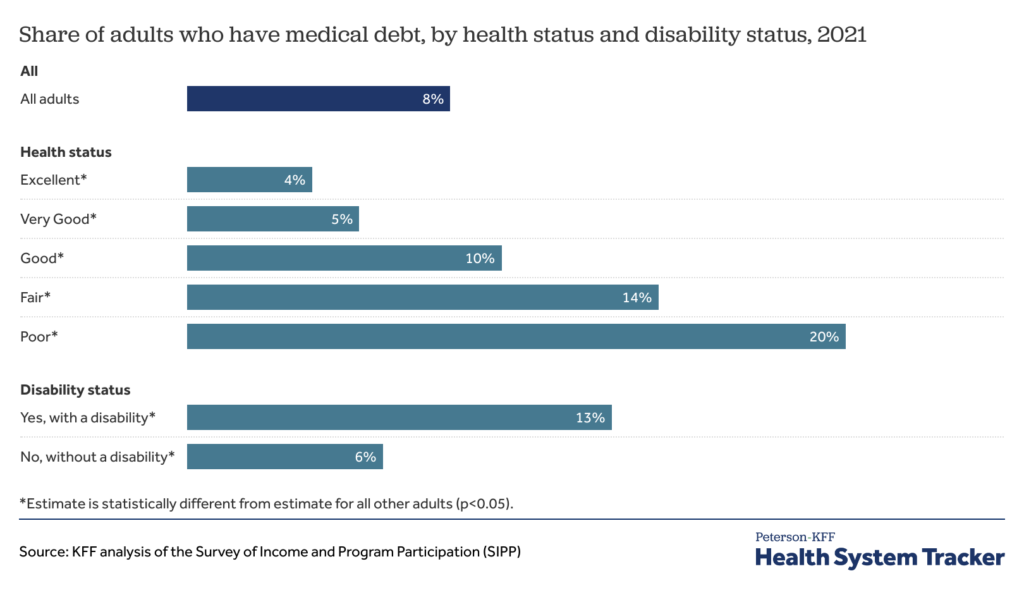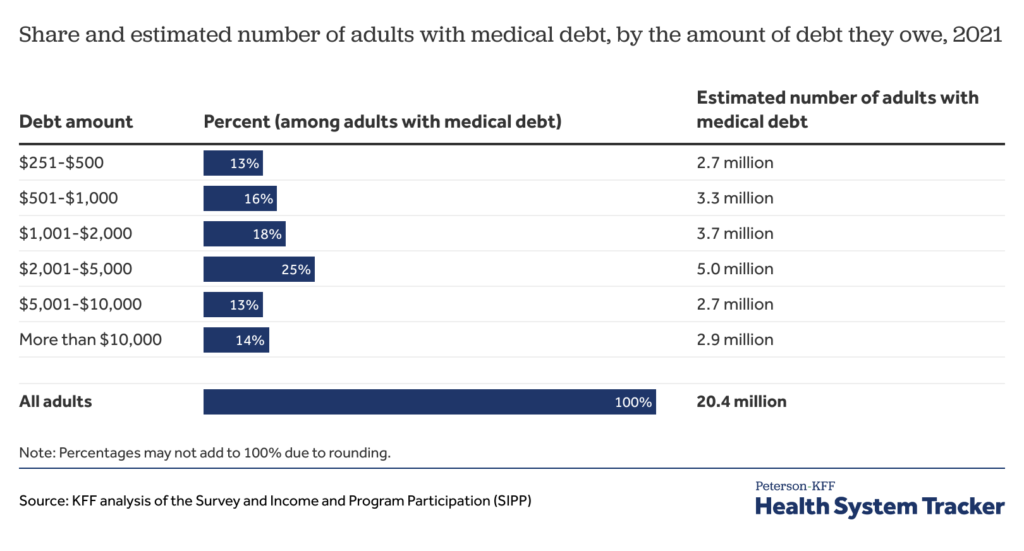Medical debt within the U.S. is a serious drawback. Whereas over 90% of people have medical insurance, many individuals are uninsured and even these with insurance coverage could also be liable to excessive deductibles and copayments. A Kaiser Household Basis (KFF) evaluation makes use of knowledge from Survey of Earnings and Program Participation (SIPP) and finds that:
…20 million individuals (practically 1 in 12 adults) owe medical debt…individuals in the US owe at the least $220 billion in medical debt. Roughly 14 million individuals (6% of adults) within the U.S. owe over $1,000 in medical debt and about 3 million individuals (1% of adults) owe medical debt of greater than $10,000. Whereas medical debt happens throughout demographic teams, individuals with disabilities or in worse well being, lower-income individuals, and uninsured persons are extra more likely to have medical debt.


A key coverage query, then, is ‘what would occur if we eradicated half or all of this debt?’ In accordance with a paper by Kluender et al. (2024), the reply is ‘not a lot’.
We partnered with RIP Medical Debt to conduct two randomized experiments that relieved medical debt with a face worth of $169 million for 83,401 individuals between 2018 and 2020. We monitor outcomes utilizing credit score stories, collections account knowledge, and a multimodal survey. There are three units of outcomes. First, we discover no affect of debt aid on credit score entry, utilization, and monetary misery on common. Second, we estimate that debt aid causes a average however statistically vital discount in cost of present medical payments. Third, we discover no impact of medical debt aid on psychological well being on common, with detrimental results for some teams in pre-registered heterogeneity evaluation.
The New York Instances has extra protection of this maybe shocking end result.